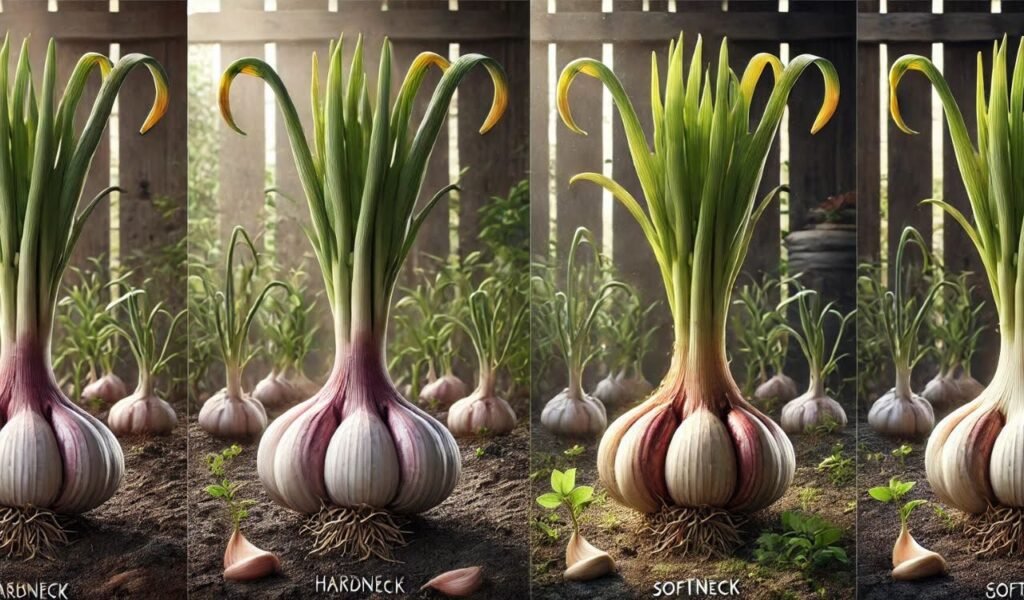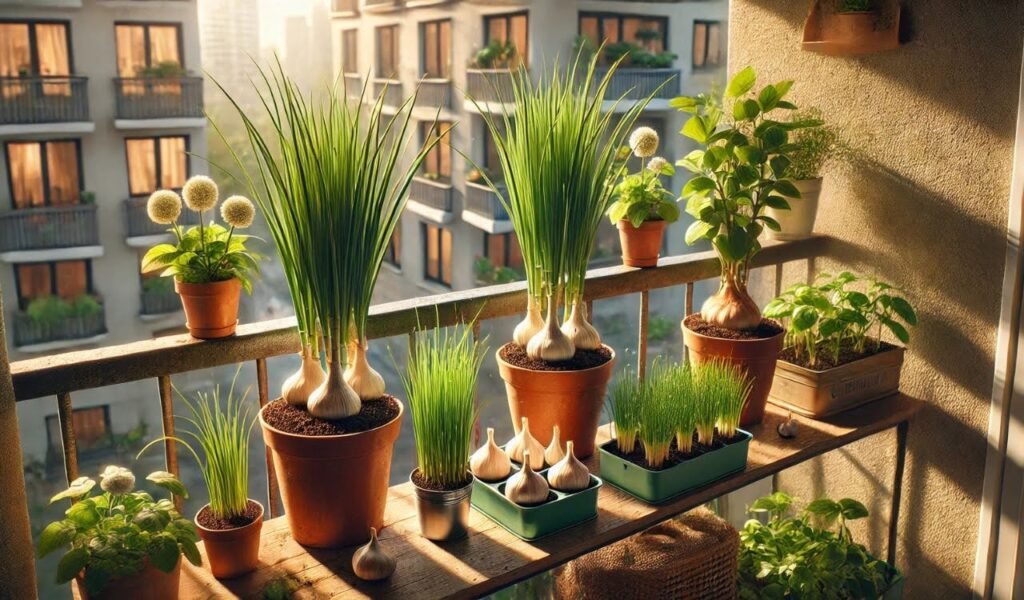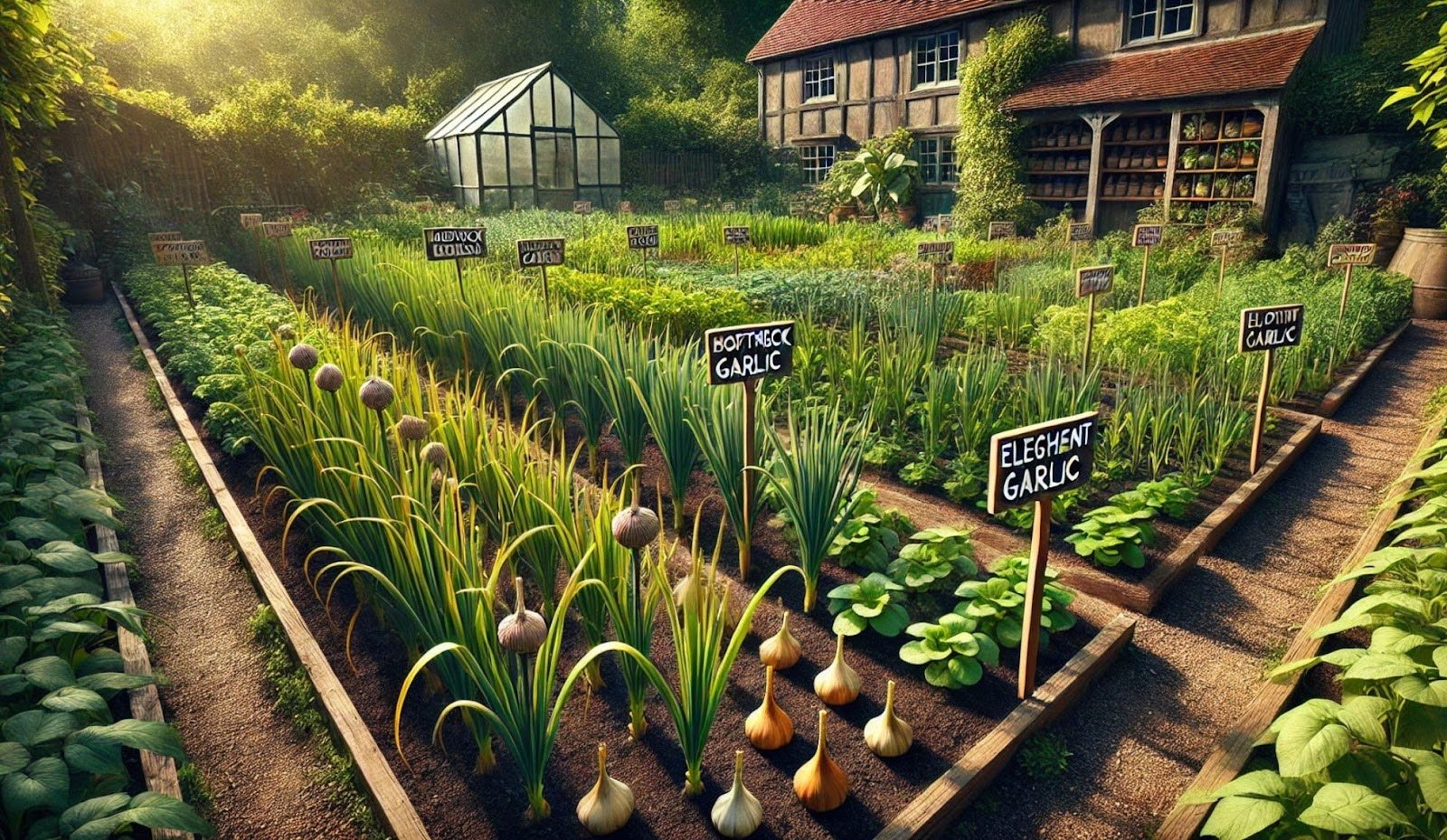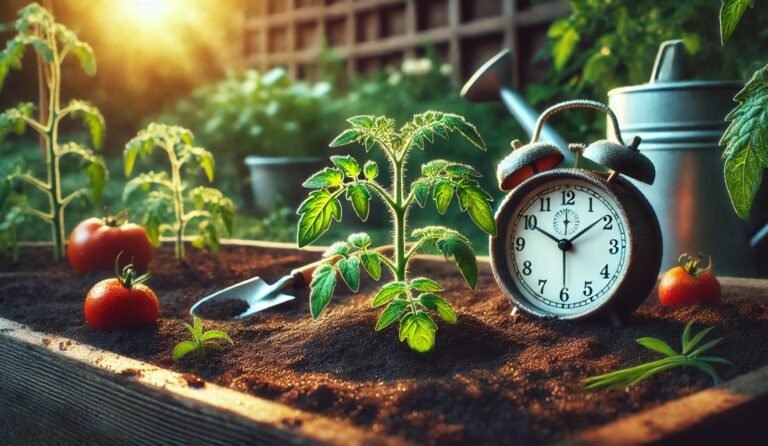Types of Garlic Plants: Best Varieties for Home Gardening
Types of garlic plants go way beyond the basic bulbs you see at the grocery store. From bold, spicy hardneck varieties to long-storing softneck garlic, each type has its own charm. Ever heard of elephant garlic? It’s massive and surprisingly mild! Whether you’re growing garlic in your backyard or a kitchen pot, picking the right type makes all the difference. Stick around, and we’ll break down the best garlic varieties for your home garden. Let’s grow!
Understanding the Two Main Types of Garlic: Hardneck vs. Softneck

Garlic is mainly classified into two broad categories: hardneck garlic (Allium sativum var. ophioscorodon) and softneck garlic (Allium sativum var. sativum). The difference between them lies in their growing conditions, bulb structure, flavor, and storage potential.
Hardneck Garlic: Ideal for Cold Climates
If you live in a region with harsh winters, hardneck garlic is your best bet. It thrives in colder climates and develops a stiff, woody stalk in the center of the bulb. Hardneck garlic also produces garlic scapes, which are long, curly stems with a mild garlic flavor.
These scapes are often harvested and used in cooking before the garlic bulb is fully mature. One of the biggest advantages of hardneck garlic is its rich, complex flavor. However, it has a shorter shelf life compared to softneck varieties, usually lasting around 3 to 6 months after harvesting.
Some of the most popular hardneck garlic varieties include:
Rocambole Garlic – Known for its deep, rich taste and easy-to-peel cloves, making it a favorite among chefs.
Purple Stripe Garlic – Distinguished by its vibrant purple-streaked skin, it has a slightly sweet and spicy flavor.
Porcelain Garlic – Contains large, thick-skinned cloves and is rich in allicin, a compound known for its health benefits.
Softneck Garlic: Best for Warmer Climates and Long Storage
Softneck garlic, as the name suggests, has a soft, flexible stem rather than a hard, central stalk. This type of garlic is commonly found in grocery stores because of its longer shelf life (up to a year) and ability to grow in a variety of climates, especially warmer regions.
Unlike hardneck garlic, softneck varieties do not produce scapes, but they have more cloves per bulb. This makes them great for braiding, which is a beautiful and practical way to store garlic.
Some well-known softneck garlic varieties include:
Silverskin Garlic – The most commonly found type in supermarkets, silverskin garlic has a strong, pungent flavor and stores exceptionally well.
Artichoke Garlic – Named for its layered clove structure resembling an artichoke, this variety has a mild flavor, making it ideal for roasting and everyday cooking.
Unique Garlic Varieties for Home Gardeners
While hardneck and softneck garlic are the most commonly grown, there are other unique garlic-related plants that gardeners love to cultivate. Some of these include elephant garlic, society garlic, and mustard garlic.
Elephant Garlic Plant: The Giant of the Garlic World
Despite its name, elephant garlic (Allium ampeloprasum) isn’t actually a true garlic but rather a type of leek. However, it looks just like oversized garlic, with massive bulbs that can grow up to 5 inches in diameter!
The flavor of elephant garlic is much milder and slightly sweet, making it an excellent choice for those who find regular garlic too strong. It’s perfect for roasting whole, blending into soups, or slicing raw in salads. Elephant garlic thrives in well-drained soil and full sun, requiring 8 to 10 months to mature fully.
Society Garlic Plant: An Ornamental and Edible Herb
Unlike true garlic varieties, society garlic (Tulbaghia violacea) is a flowering plant known for its delicate purple flowers and mild garlic-like flavor. This plant is often used as an ornamental herb in gardens, as it repels pests while adding beauty to the landscape.
Although not a true garlic, its leaves and flowers can be used in cooking, much like garlic chives. It’s an excellent choice for home gardeners who want an attractive yet functional plant. Society garlic grows well in warm climates, making it a great addition to outdoor gardens or patio containers.
Mustard Garlic Plant: A Wild and Invasive Herb
Mustard garlic (Alliaria petiolata) is not commonly grown in home gardens because it’s classified as an invasive species in many regions. However, for those who enjoy wild foraging, mustard garlic is a fascinating plant.
It has a strong garlic and mustard flavor, which makes it a great addition to salads, pestos, and stir-fries. While it offers a bold taste, this plant spreads aggressively, so it’s important to manage it carefully if you decide to grow it in your backyard.
Best Garlic Types for Indoor Gardening

If you don’t have an outdoor garden, don’t worry—you can still grow garlic indoors! The best garlic varieties for indoor gardening are softneck garlic and garlic chives.
Softneck garlic is ideal for indoor pots because it adapts well to confined spaces. Simply plant a few cloves in a container with well-draining soil, place it near a sunny window, and keep the soil moist. Within a few weeks, you’ll start seeing green garlic shoots, which can be used in cooking just like scallions.
Garlic chives are another great alternative for indoor gardening. These herbs have a mild garlic flavor and can be harvested continuously by snipping the green tops. They grow well in small pots, making them perfect for kitchen windowsills.
Tips for Growing Garlic in Your Backyard
If you’re planning to grow garlic in your backyard, here are some essential tips to ensure a successful harvest:
Choose the right planting time – Garlic is usually planted in the fall (September to November) for a summer harvest. However, in warmer regions, it can also be planted in early spring.
Use well-drained soil – Garlic thrives in loose, sandy soil with good drainage. Avoid compacted or clay-heavy soil, as it can lead to rot.
Ensure proper spacing – Plant individual garlic cloves 4 to 6 inches apart and about 2 inches deep to allow proper root development.
Water regularly but avoid overwatering – Garlic needs consistent moisture, but too much water can cause rotting. Water deeply once a week, and reduce watering as harvest time approaches.
Harvest at the right time – Garlic is ready to harvest when the lower leaves start turning brown, typically 8 to 10 months after planting. Carefully dig up the bulbs and let them cure in a dry, well-ventilated area for a few weeks before storing.
FAQ
What are the main types of garlic plants?
The two main types are hardneck garlic (better for cold climates) and softneck garlic (best for warmer regions and long storage).
Which type of garlic has the strongest flavor?
Hardneck garlic, especially Rocambole and Purple Stripe, tends to have a bolder, spicier flavor than softneck varieties.
What is the easiest garlic to grow for beginners?
Softneck garlic, like Silverskin or Artichoke garlic, is the easiest to grow since it adapts to various climates and stores well.
Can I grow garlic indoors?
Yes! Softneck garlic and garlic chives grow well in pots, making them perfect for indoor gardening.
What is elephant garlic?
Elephant garlic looks like garlic but is actually a type of leek with a mild, sweet flavor and massive bulbs.
How long does garlic take to grow?
Garlic typically takes 8 to 10 months from planting to harvest, depending on the variety and growing conditions.
Conclusion
Growing garlic at home is an incredibly rewarding experience. Whether you prefer the bold flavors of hardneck garlic, the long storage life of softneck garlic, or the unique qualities of elephant garlic, society garlic, and mustard garlic, there’s a perfect variety for every gardener.
By understanding the different types of garlic plants and their growing requirements, you can enjoy a continuous supply of fresh, homegrown garlic all year round. So why not start your garlic garden today? With the right variety and proper care, you’ll soon be enjoying the unbeatable taste of freshly harvested garlic straight from your backyard or kitchen!







